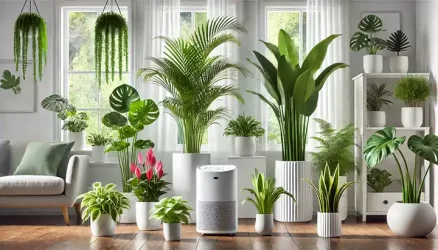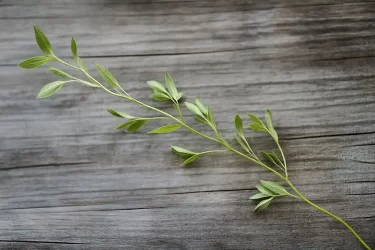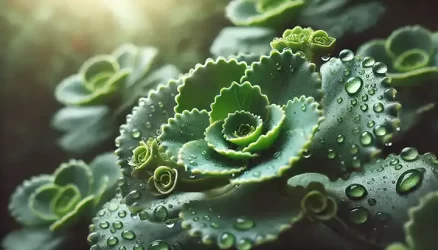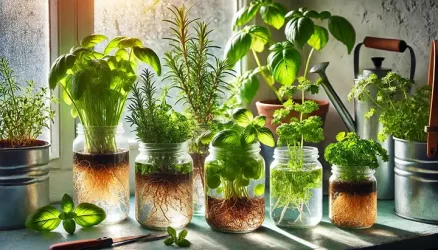12 Plants Recommended by NASA to Purify the Air
NASA conducted a study in order to reduce high concentrations of environmental pollutants, such as cigarette smoke or organic solvents, by using plants to purify the air. The various pollutants present in the air, the characteristics of the plants, and the ease of obtaining them on the market were taken into account.
We rarely breathe clean air, especially if we find ourselves living in the city. Buying an air purifier to clean our environment seems to be the only option, however it is a somewhat expensive option. That is why it is necessary to resort to the presence of plants in the house, not only because it gives them a visually more beautiful environment, but because they clean toxins from the air simultaneously.
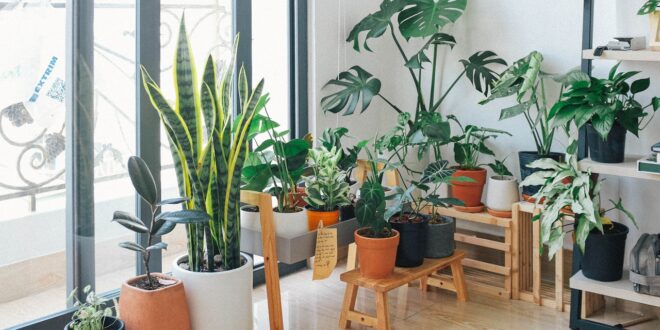
What is in our air?
A healthy home environment is vital to a person’s well-being, and indoor plants contribute more to it than you realize. Its main benefit is acting as an air purifier, so it seems reasonable that NASA conducted a clean air study.
The most common pollutants that plants are responsible for filtering are benzene, xylene, ammonia, trichlorethylene and formaldehyde, according to the study.
Trichlorethylene: Cast into printing inks, paints, lacquers, varnishes, and adhesives.
Formaldehyde: Found in paper bags, waxed papers, paper towels, table napkins, plywood panels, and synthetic fabrics.
Benzene: Used to make plastics, resins, synthetic fibers, rubber lubricants, dyes, detergents, drugs, and pesticides. It can also be found in tobacco smoke, vehicle exhaust, glue, paint, and furniture polish.
Xylene: Found in the printing, rubber, leather and paint, tobacco smoke, and vehicle exhaust industries.
Ammonia: Found in glass cleaners, floor waxes, aromatic salts, and fertilizers.
What effect does it have on humans?
Like most chemicals, the adverse health effects you may encounter depend on several factors, including how much you are exposed to, how you are exposed, how long you are exposed, and the form of the chemical. . Here are the common symptoms associated with each toxic agent.
Trichlorethylene: Short-term exposure includes excitement, dizziness, headache, nausea, and vomiting followed by drowsiness.
Formaldehyde: Short-term exposure includes irritation of the nose, mouth, and throat and, in some cases, inflammation of the larynx and lungs. People who suffer from asthma are probably more susceptible to the effects of inhaling formaldehyde.
Benzene: Short-term exposure includes eye irritation, drowsiness, vertigo, increased heart rate, headaches, confusion, and in some cases can cause unconsciousness.
Xylene: Short-term exposure includes mouth and throat irritation, dizziness, headache, confusion, heart problems, liver and kidney damage, and coma.
Ammonia: Short-term exposure includes eye irritation, cough, and sore throat.
12 Air Purifying Plants Recommended by NASA:
The study carried out by NASA results in 18 plants that provide us with this benefit, today we are going to talk about 12 of these plants.
Areca

The Areca Palm is designed to take in carbon dioxide and release oxygen. However, what sets Palma de Areca apart is its ability to also purify the environment in which it is placed by removing dangerous chemicals such as formaldehyde, xylene and toluene. It needs to be watered frequently. A good place to locate this plant is the living room.
Common fern

The most common fern of all is one of the best filter plants. It needs to be in a space with a lot of light, but indirect. It will always proliferate better in humid environments. It requires a lot of water, so make sure the soil in your pot is always moist. The best place to locate this plant is the bathroom.
Spider or ribbon plant

This plant will quietly fight toxins like carbon monoxide and xylene, a solvent used in the printing and rubber industries. If you have pets, this is one of the few household plants that are not toxic to animals. The best place to locate this plant is the living room.
Chinese evergreens

It is one of the most common household plants and for good reason. This plant emits a high oxygen content while purifying interior spaces of harmful chemicals such as benzene, formaldehyde and other toxins. As its name suggests, it is very popular in China specifically for its high efficiency in removing harmful pollutants from the air. This plant is perfect because it does not require much care. It is a shade plant, tolerates a lack of light, but not direct light. It does not require a lot of water, so it can be watered occasionally with a focus on keeping the soil moist. To keep your leaves in better condition, you can use a spray bottle to moisten them twice a week with warm water. The best place to locate this plant is the living room.
Bamboo palm

One of the plants with the greatest air purification power. It needs shade or half shade to live in good conditions and its watering will be every three days in the warmer months and only twice a month in winter. This plant is useful for purifying formaldehyde and xylene.
Pothos

This is a very popular and readily available plant. It is very resistant, thanks to its incredible ability to adapt to any environment, it does not require great care, it only requires weekly watering. It will be important that it is not exposed to direct light, as the sun will burn its leaves. It is effective in absorbing formaldehyde, xylene, and benzene.
Anthurium

It is a decorative plant as it has red or pink flowers and is kept almost all year round. It is not an easy plant to care for, so you will have to pay close attention to its needs. It requires a bright environment, but without direct light, as well as a humid environment. It is recommended to have the earth and its leaves moist. It is effective in absorbing formaldehyde, ammonia, and xylene.
Raphis or Lady palm

This is one of the few plants that can help reduce ammonia levels that can be found in a range of cleaning products. It is also responsible for removing formaldehyde and xylene from the air. Moisture lover, this plant will be very happy with generous watering.
African daisy

It is the most beautiful plant of the group and is generally used as a decorative element in gardening. However, it is also distinct in its ability to produce high levels of oxygen at night while removing harmful chemicals such as benzene and trichlorethylene.
It prefers bright sunlight during the summer, spring, and fall, and indirect light during the winter. It needs to be watering regularly. Beneficiary for those who suffer from sleep apnea and respiratory disorders, keep this on the nightstand for better sleep.
Trunk of Brazil

It is a plant that will help you reduce anxiety and chronic fatigue. It needs indirect light or half shade and its waterings must be constant, but with little water. Trichlorethylene formaldehyde and benzene are among the pollutants that this plant fights.
Common ivy

An ideal plant for those who suffer from asthma or suffer from allergies, it filters all allergies from the air. It adapts to any type of light and its irrigation must be constant, ensuring that the soil is always moist. It can remove formaldehyde and benzene particles from the air, making it an essential home plant if we want to breathe fresh air.
Mother-in-law’s tongue or tiger’s tongue

This plant produces oxygen at night, and has the ability to purify the air through the removal of benzene, formaldehyde, trichlorethylene, xylene, and toluene. It is ideal to keep it in rooms. Works well in window light and needs to be watered weekly. In an air-sealed room, these plants are able to produce enough oxygen to breathe normally.









